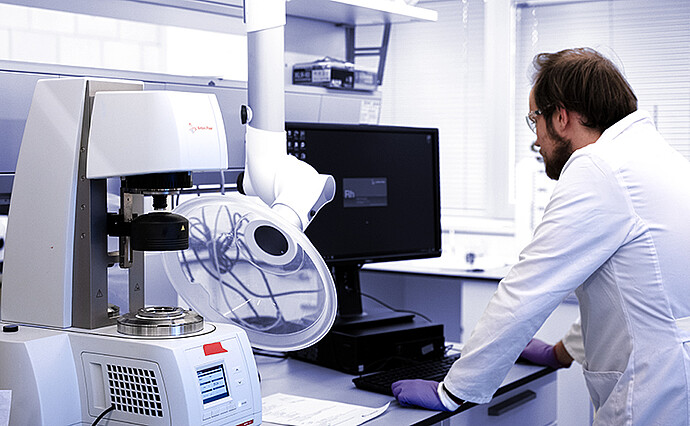
(C) QustomDot
Quantum of Innovation
2024-04-08 | Corporate
His name: Walravens. Willem Walravens. His mission: developing products that enable the coating, spinning or inkjet printing of quantum dot formulations onto display panels.
What sounds like the beginning of a secret agent movie, is in fact the story of a Belgian company that works on and with quantum technology. Willem Walravens is co-founder and Chief Product Officer at QustomDot: “QustomDot is a spin-off of Ghent University, where the core technology regarding quantum dots was developed for over 10 years. We spun off in 2020 with the goal of enabling our customers access to all the beautiful benefits of quantum dots.” These beautiful benefits are clear at first glance: bright and vivid colors. But it’s not easy to create these colors, as conventional quantum materials contain a lot of cadmium, which is a very toxic and restricted element. So QustomDot focuses on the development of cadmium-free quantum dots.
The results include inks and resins that can be used for display applications, such as microLED.
From nanomaterial to ink to LED
These inks in turn are made of different components, such as organic monomers, oligomers, inorganic nanoparticles and solvents. “For us, it is crucial to understand the rheological properties of these fluids as they directly influence various aspects, including processability, stability and shelf life of our products,” says Mohammad Kiaee, material scientist and ink expert at QustomDot. This is why the company reached out to
Anton Paar Belgium and purchased an MCR 302 rheometer for the laboratory in order to determine flow behaviours, as well as a Litesizer 500 particle analyzer for zeta potential measurements. The instruments enable the QustomDot team to understand the impact of each component and their interactions in the inks and resins that will later be used for LED products.
“The Anton Paar rheometer in particular is an invaluable asset for the development of our products. Its customizable measurement geometry and protocols offer unparalleled flexibility in testing various formulations and materials; we are able to characterize our samples rapidly, visualize data and conduct in-depth analyses. And of course it is user friendly, ensuring that our team can quickly adapt to operating the instrument,” says Mohammad Kiaee.
The future is bright
QustomDot is a pretty young company, working in a modern and innovative field. But the best is yet to come: “Quantum dots are seen as an inflection point in the display industry – a technology that signals moving away from the old and going towards the new. It is difficult to grasp the full impact of quantum dots yet, but merely thinking about flexible, foldable, rollable or stretchable displays with low-power consumption sparks many new and exciting ways for employing displays in everyday life,” says Willem Walravens.
He thinks that in the future quantum dot technology may also be used for microscopic-sized displays that enable applications from ocular lenses to holographic projectors. And of course there may also be other markets the nanomaterial could be used in, like in machine vision, telecommunication, photonics or for medical diagnosis.
A revolutionary technology, about to leave the world of innovation shaken (but not stirred).